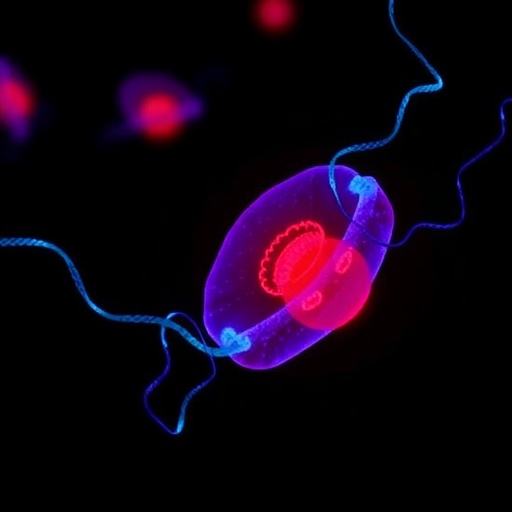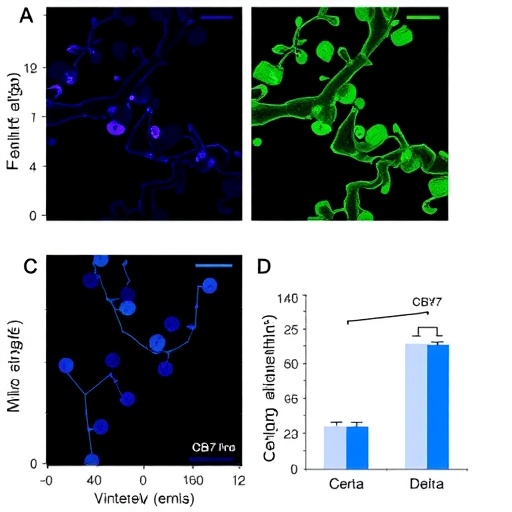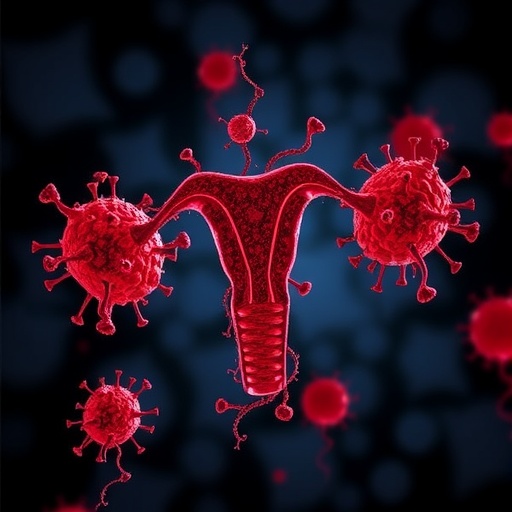In the intricate world of cellular biology, the lipid composition of membranes plays a crucial role in defining the functionality and identity of various organelles. These membranes are not homogeneous; rather, they showcase a notable heterogeneity that is modulated by several factors, primarily involving the action of transport proteins. While the understanding of membrane complexities has advanced over the years, the challenge of visualizing lipid dynamics in living cells at a suitable resolution has limited researchers’ ability to explore these phenomena fully. Recently, a groundbreaking approach known as fluorogen-activating coincidence encounter sensing, or FACES, has emerged, capturing the attention of biologists seeking to delve deeper into the behavior of lipids in real-time.
FACES represents a game-changing chemogenetic tool, specifically designed for the quantitative imaging of subcellular lipid pools. This innovative technique offers novel insights into the spatial distribution and transbilayer orientation of lipids within the membranes of living cells. By leveraging the power of bioorthogonal chemistry, FACES utilizes genetically encoded fluorogen-activating proteins (FAPs) that enable reversible proximity sensing of lipid molecules, a capability that could revolutionize our understanding of membrane dynamics and composition.
At first glance, the engineering behind FACES may seem complex, but its essence lies in a simple yet effective principle: utilizing FAPs to monitor lipid distribution and trafficking in real-time. These bioengineered proteins can selectively bind to conjugated molecules, allowing for a visual representation of lipid movement across membranes. By providing high spatial resolution, FACES allows researchers to dissect the roles of various lipid transfer proteins and how they facilitate the transport of essential lipids like phosphatidylcholine between crucial organelles, such as the endoplasmic reticulum (ER) and mitochondria.
In the context of cellular dynamics, understanding how phosphatidylcholine is trafficked is vital since this phospholipid is a fundamental component of cell membranes and plays roles in signaling and membrane integrity. Researchers successfully applied FACES to visualize the flow of these lipids, thereby shedding light on the intricate transport mechanisms that underpin cellular health and function. This new lens into lipid transport facilitates an unprecedented understanding of cellular processes and pathology, especially those related to metabolic disorders, neurodegeneration, and cancer.
Beyond visualizing lipid transport, the versatility of FACES extends to unveiling the membrane asymmetry of lipids in various organelles, particularly in the trans-Golgi network—a central hub in the trafficking of proteins and lipids within the cell. With the ability to manipulate transmembrane domain-containing FAPs, scientists can gain valuable insights not only into individual lipid species but also into the distribution patterns of multiple lipid classes. This capability is essential for understanding how the cell maintains its lipid balance and organizes its internal architecture to ensure efficient operation.
The implications of using FACES for studying membrane asymmetry are profound. Researchers can start to investigate the underlying mechanisms that create and maintain this asymmetry—a fundamental characteristic of biological membranes. The question of how cells establish distinct lipid environments on either side of a bilayer, a process integral to the functionality of membrane proteins and overall cellular communication, is now within reach of empirical exploration.
Moreover, FACES is not limited to lipid imaging; its applications extend to analyzing other biomolecules such as glycans. This broadens the scope of research possibilities and enhances the potential for discovering novel interactions between lipids and carbohydrates within the cellular milieu. In a cellular landscape where lipids, proteins, and carbohydrates interact intricately, being able to visualize these roles in real-time could indeed unveil new paradigms in cell biology.
Yet, as with any novel technology, there will be challenges and learning curves associated with FACES. As researchers begin to incorporate this tool into their studies, ongoing collaborations across various disciplines will be paramount. This is the kind of cross-pollination that generates new ideas and innovation, pushing the boundaries of what we know about cellular structure and function.
The excitement surrounding FACES and its potential tenfolds amid an ever-growing understanding of the biochemical pathways that sustain life at the cellular level. With scientists honing in on the nuances of lipid dynamics and membrane interactions, this tool stands to be a catalyst for breakthroughs in pharmacology, metabolic research, and therapeutic developments. FACES is not merely a technological advancement; it embodies a shift in how researchers approach the complexities inherent in cellular biology.
As FACES continues to create ripples within the scientific community, it will undoubtedly inspire a wave of new research questions. The integration of this imaging technique into everyday laboratory practices could lead to a profound shift in the way scientists think about membrane biology, potentially yielding insights that bridge gaps between basic research and clinical applications.
The future of lipid research might see FACES as a core component of cellular studies, driving forward our collective understanding of fundamental biological processes. As more laboratories adopt this transformative approach, we can anticipate a new era rich with discoveries that enhance our understanding of health and disease. The capabilities afforded by FACES equip researchers with an unprecedented tool to dissect the dynamic interplay of lipids within living cells, thus promising a brighter horizon for cellular and molecular biology.
As we stand on the brink of these exciting developments, the scope of what FACES can achieve is vast. By equipping scientists with a technique to quantitatively visualize and probe lipid-localization dynamics, we stand to gain insights into the intricate tapestry of cellular life. The utility of FACES in both academic and clinical research contexts speaks to its potential to bridge theoretical knowledge with practical applications that could revolutionize our approach to disease treatment and prevention.
In conclusion, FACES heralds a significant step forward in our quest to unravel the complexities of cellular membranes and their integral components. The implications of this groundbreaking imaging technique are far-reaching, inviting scientific inquiry into lipid biology that is as deep as it is broad. As researchers embrace this novel approach, we are sure to witness an era of innovation that pushes the frontiers of science, ultimately leading to advances that could benefit humanity at large.
Subject of Research: Lipid Imaging in Living Cells
Article Title: Leaflet-specific phospholipid imaging using genetically encoded proximity sensors.
Article References:
Moore, W.M., Brea, R.J., Knittel, C.H. et al. Leaflet-specific phospholipid imaging using genetically encoded proximity sensors.
Nat Chem Biol (2025). https://doi.org/10.1038/s41589-025-02021-z
Image Credits: AI Generated
DOI: https://doi.org/10.1038/s41589-025-02021-z
Keywords: Lipid dynamics, cellular imaging, membrane asymmetry, phosphatidylcholine, fluorogen-activating proteins, chemogenetics.
Tags: bioorthogonal chemistry applicationschemogenetic tools for biologyfluorogen-activating coincidence encounter sensinggenetically encoded sensorsinnovative imaging techniques in cell biologyleaflet phospholipid dynamicslipid membrane compositionmembrane heterogeneity in cellsreal-time lipid visualizationspatial distribution of lipidssubcellular lipid imagingtransbilayer orientation of lipids





